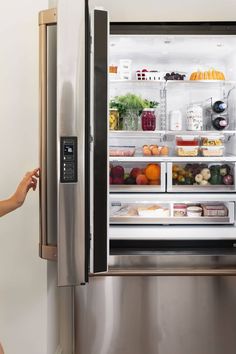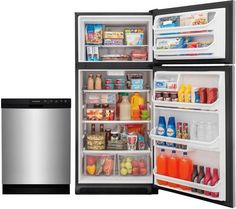What Is the Best Way to Get Around a Fridge?

If you know how a refrigerator works will make you realize that the compressor does not run continuously. Instead, a compressor operates irregularly, cycling on and off during the chilling cycle to maintain an appropriate temperature within the refrigerator cabinet. Because a refrigerator compressor cannot operate constantly, it can jump-start; this is where the refrigerator relay comes in. A start relay is an electrical switch that aids in operating the refrigerator’s compressor. It instructs the compressor when to switch on/off based on the necessity for cold air within the refrigerator unit. Now, if the relay fails or burns out, the compressor may fail to activate, resulting in the cabinet’s interior failing to freeze. Because the compressor is an integral part of the refrigeration system, your refrigerator must have a working refrigerator start relay. So, how do you get around the fridge’s relay system? But first, what are some of the symptoms of a faulty relay system?
Symptoms of a Faulty Start Relay System
As we have seen, the compressor does not run continuously but only during cooling cycles. It also has to heat up each time the chilling cycle begins, which is the responsibility of the refrigerator compressor relay. Now, if your relay system isn’t operating, you can quickly identify the symptoms of a failing system. Among these indicators are:
1. The refrigerator is not cooling.
Because the compressor does not start, the most evident indicator of a broken relay system is a lack of cooling. If the fresh food compartment temperature and the freezer begin to increase, the relay is most likely not working correctly.
2. Clicking Sound
There is frequently an audible click when the start relay kicks in. It happens whether or not the compressor is turned on. If the compressor fails to start, the relay will most likely re-trigger in a short period. Repeated clicking indicates that the start relay has failed and must be replaced.
How to Bypass the Relay

Before attempting to put your refrigerator into bypass mode, disconnect it and switch off the electricity at the circuit breaker. If feasible, enlist the assistance of another adult to assist you in moving the refrigerator away from the wall—while refrigerators aren’t usually heavy, they can offer a tripping hazard. Bypassing the relay is a straightforward task, but you must follow the wiring schematic in your refrigerator’s user manual. In general, though, here are some general principles to follow while bypassing the refrigerator relay.
Tools required:
- A standard screwdriver
- Screwdriver with a flathead
- Pliers
- Coiled electrical tape
How to Repair a Refrigerator Relay in Steps
- Remove the cover plate at the bottom back of the refrigerator that protects the relay system using a screwdriver.
- Disengage the refrigerator relay mechanism by pushing or flexing the metal box on the lower right back of the fried.
- Press down the gap between the relay and the case using a flathead screwdriver. Then, before removing the relay, push it.
- Disconnect the metal connections that link to the relay system.
- Then, remove a portion of the wire with a plier on either side.
- Using electrical tape, attach both ends of the wire back to the relay housing, bypassing the missing relay while still completing the circuit.
- Replace the relay system box lid and the cover plate at the refrigerator’s rear.
- Reconnect the power and plug the refrigerator back in.
Conclusion
It is not advisable to leave your refrigerator in bypass mode for an extended period. This is only a short and temporary remedy; you should seek the assistance of a professional expert to repair your relay.











